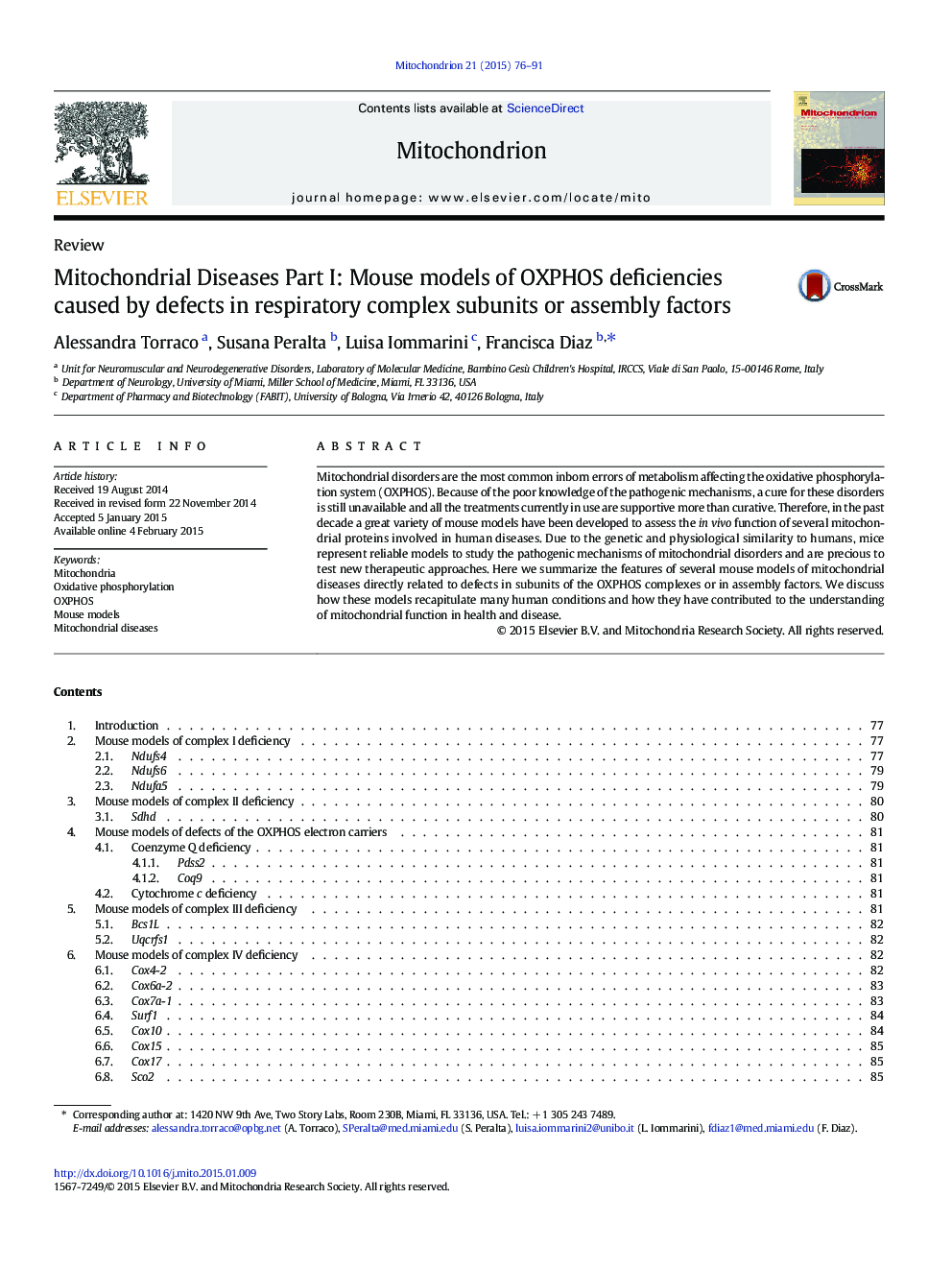| کد مقاله | کد نشریه | سال انتشار | مقاله انگلیسی | نسخه تمام متن |
|---|---|---|---|---|
| 2068680 | 1544423 | 2015 | 16 صفحه PDF | دانلود رایگان |

• Mitochondrial diseases are characterized by defects in the OXPHOS system.
• Mitochondrial diseases can be caused by mutations in either mitochondrial or nuclear DNA genes.
• Most of the mouse models recapitulate phenotypic features of the human mitochondrial disorders.
• Mouse models of mitochondrial disorders contribute to understand the pathogenic mechanisms of disease.
Mitochondrial disorders are the most common inborn errors of metabolism affecting the oxidative phosphorylation system (OXPHOS). Because of the poor knowledge of the pathogenic mechanisms, a cure for these disorders is still unavailable and all the treatments currently in use are supportive more than curative. Therefore, in the past decade a great variety of mouse models have been developed to assess the in vivo function of several mitochondrial proteins involved in human diseases. Due to the genetic and physiological similarity to humans, mice represent reliable models to study the pathogenic mechanisms of mitochondrial disorders and are precious to test new therapeutic approaches. Here we summarize the features of several mouse models of mitochondrial diseases directly related to defects in subunits of the OXPHOS complexes or in assembly factors. We discuss how these models recapitulate many human conditions and how they have contributed to the understanding of mitochondrial function in health and disease.
Journal: Mitochondrion - Volume 21, March 2015, Pages 76–91